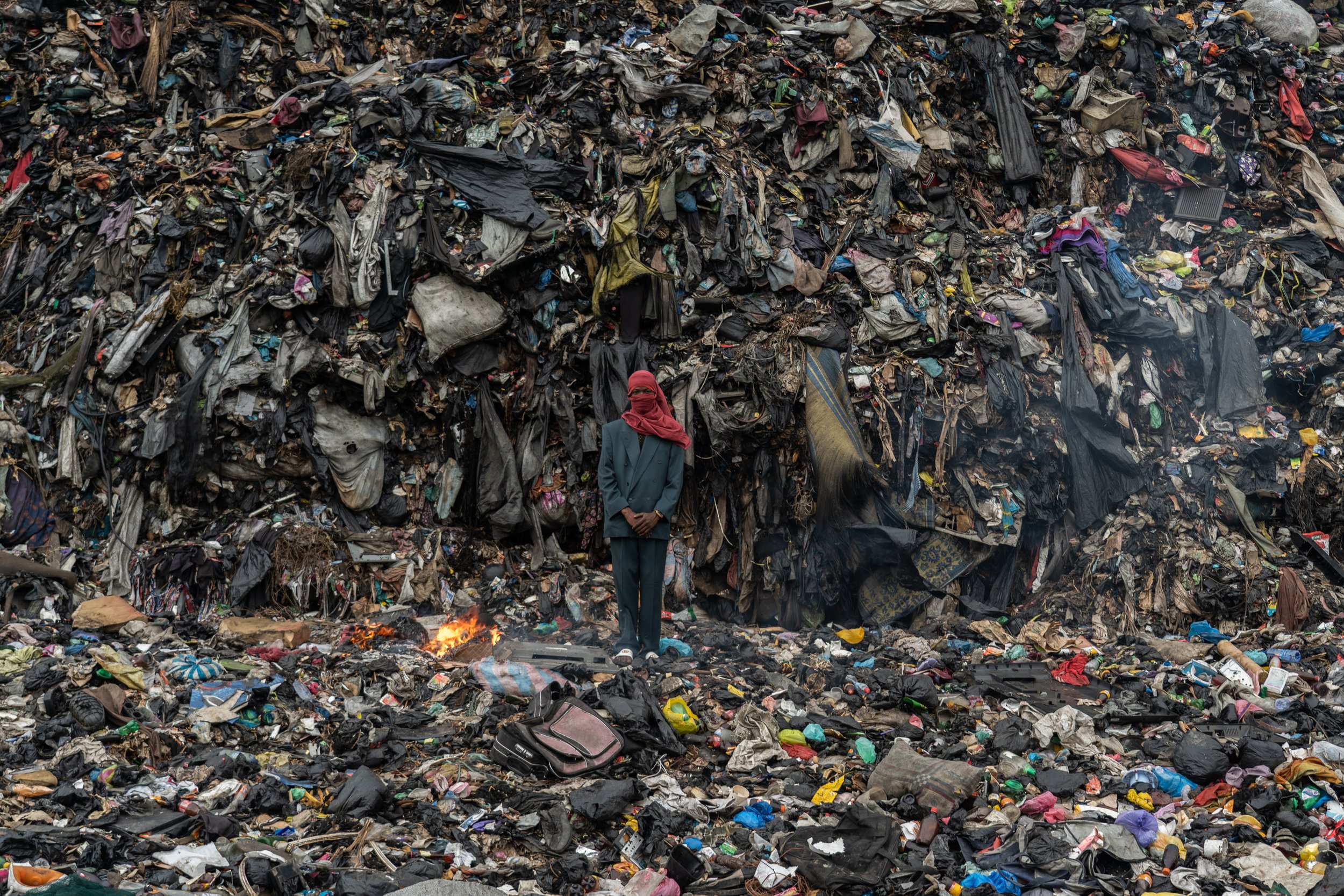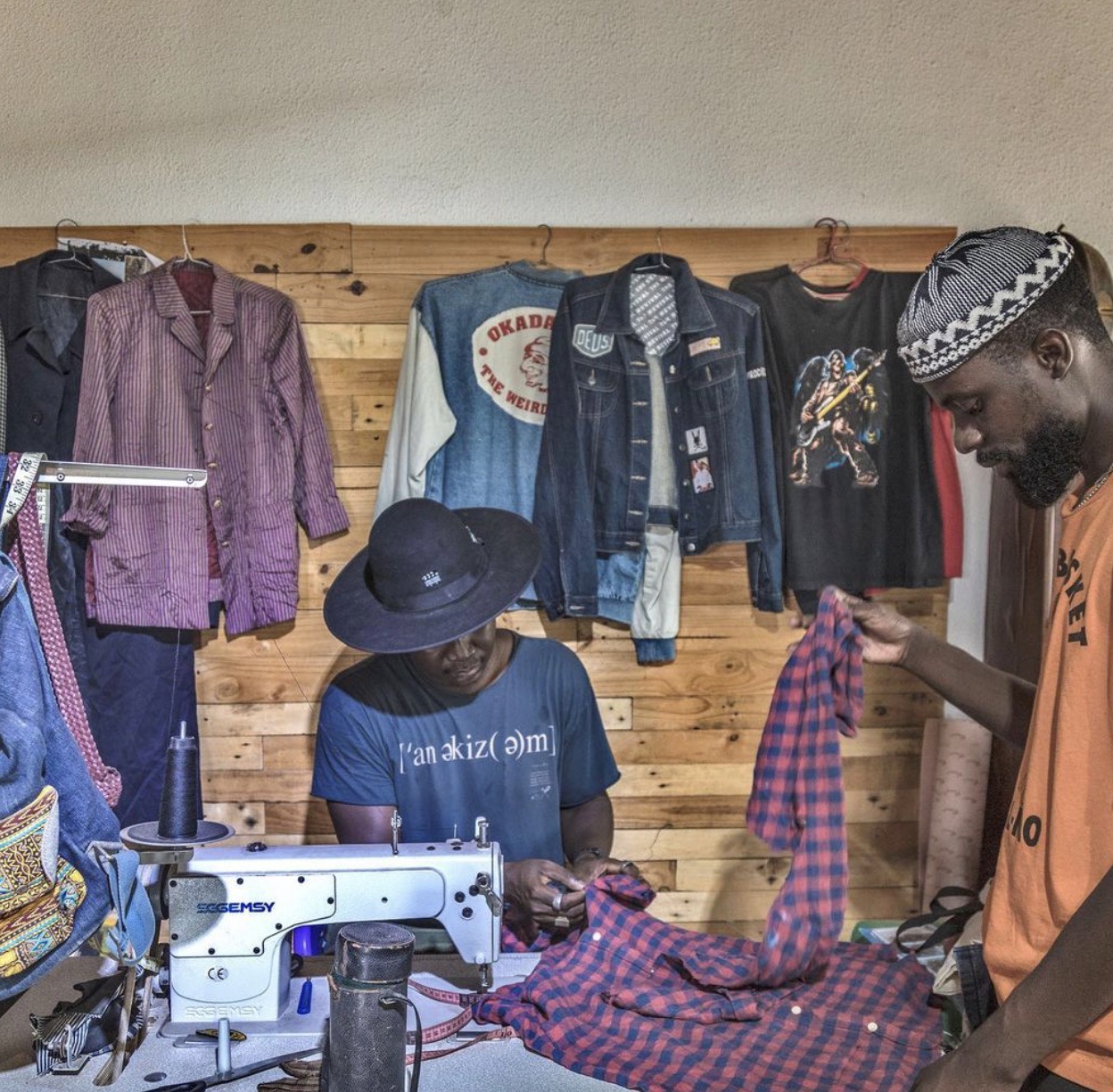When picking through the projects that have been realised by Ghana-based, community-first organisation THE REVIVAL, the philosophy “one man’s rubbish may be another’s treasure” almost immediately springs to mind. Although for them, this appears to be more a way of being than anything else, and it breathes through the numerous projects they’ve undertaken. Whether these have been on an local scale, such as with the reinterpretation of a popular signage in Kantamanto Market, with the help of Ghana-based artists or an international scale, which has led to partnerships with cultural institutions such as the Victoria and Albert Museum. Below, we trawl through everything from their geographically considerate modus-operandi to its community-powered initiatives and commitment to local artisans with founder Yayra Agbofah. Needless to say, this is an organisation that doesn’t shy away from getting its hands dirty, and neither should you, so, go ahead, read on.
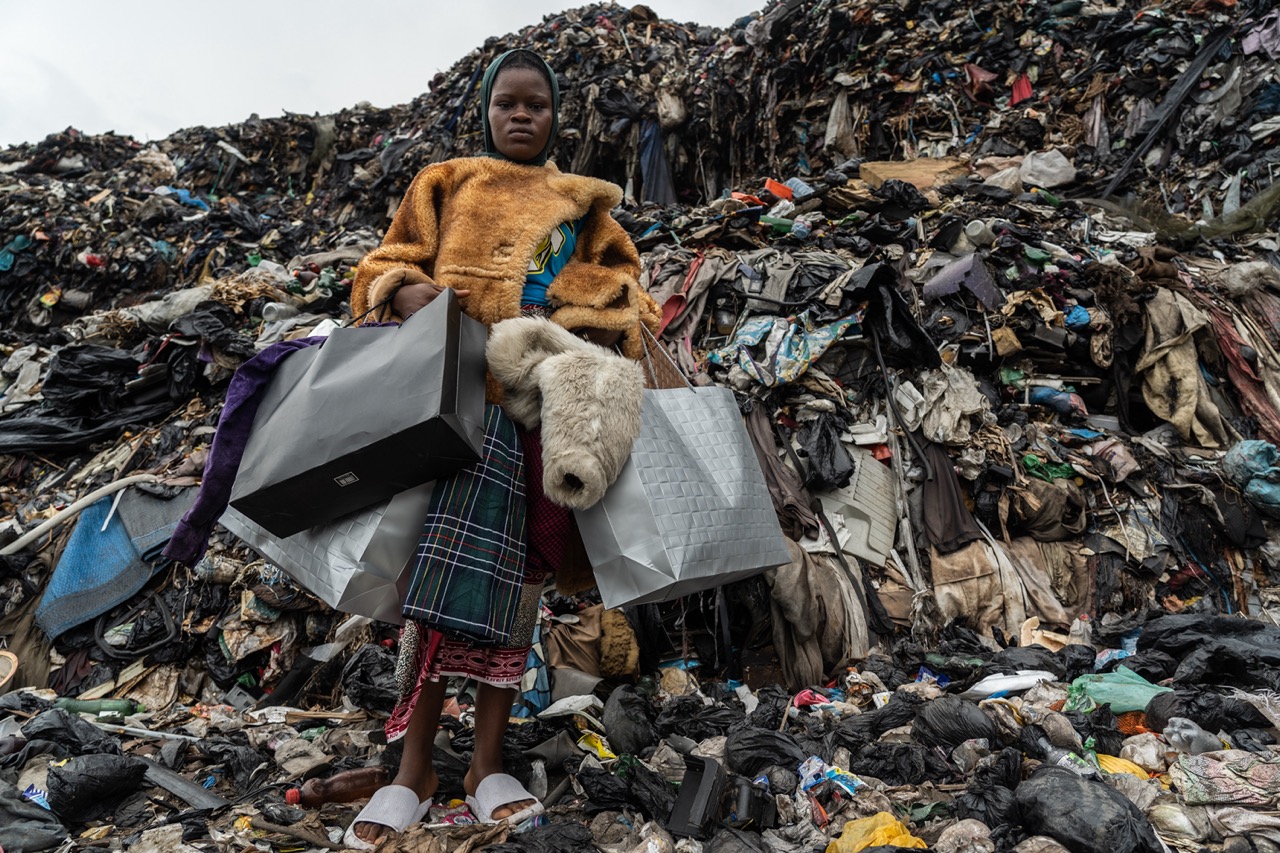
The Revival, it’s a pleasure to speak with you for Bubblegum Club Magazine. I’d like to begin by asking about where your organisation began and how the intention behind it has revived itself throughout the years, particularly as it encounters contemporary social, political and possibly, even cultural changes?
YAYRA AFGOBAH: Thank you for having me, it’s a pleasure to share The Revival’s journey with Bubblegum Club Magazine.
The Revival started with a strong desire to tackle the environmental and social challenges stemming from Ghana’s massive textile waste. From the beginning, our mission has been rooted in giving second life to discarded clothing while uplifting the local community, particularly the youth and women of the Kantamanto Market. Over the years, our approach has evolved in response to shifting cultural, social, and political landscapes.
As global awareness of sustainability and ethical fashion has grown, so has our commitment to innovative upcycling and educational initiatives. With Ghana’s emerging voice in the sustainability space, The Revival has adapted by focusing on advocacy and community-driven projects that address waste and empower local artisans. Each step forward has been a revival of our founding purpose, growing into a deeper understanding of how we can make a meaningful impact on both people and the planet.
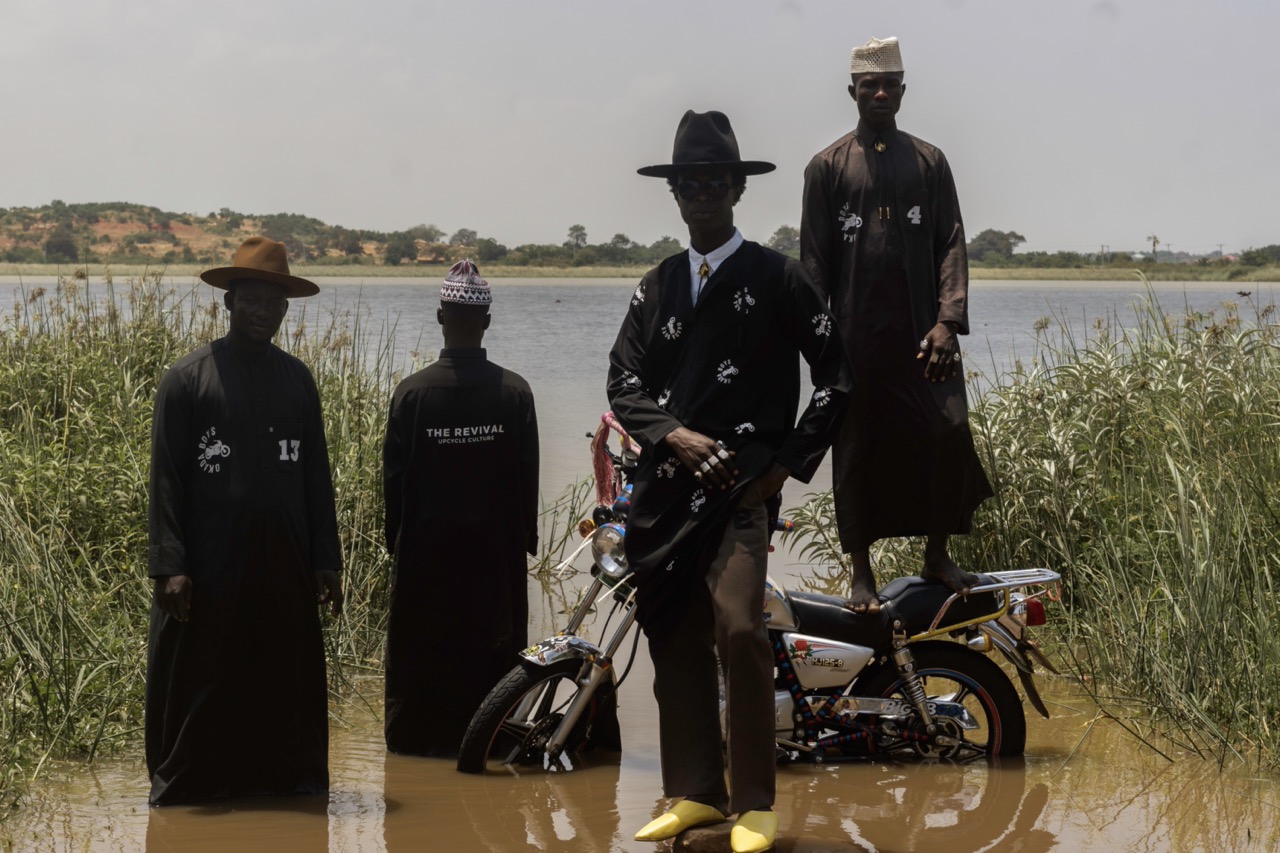
Speaking of culture-orientated endeavours, you primarily concentrate on sustainable advocacy. But you’ve also collaborated alongside GHANA-based artists on the ‘Kantamanto Signage Renovation’, ultimately, as put in it’s accompanying biography, the project’s influence“lies in its capacity to inspire a shift in perceptions regarding waste and fashion, fostering a sense of unity and hope within the Kantamanto community.” Are there any significantly apparent facets of Ghana that you believe had undergone a similar refresh?
YAYRA AFGOBAH: Absolutely. Ghana, particularly in recent years, has been experiencing a broader cultural awakening around sustainability, resourcefulness, and community-driven initiatives. The Kantamanto Signage Renovation project reflects this shift, highlighting not only the creative potential within what others might view as “waste” but also the resilience and ingenuity of local communities.
Similarly, Ghana has seen renewed pride in its heritage of craftsmanship and traditional practices, with younger generations showing strong interest in sustainable and locally sourced fashion. This has been a powerful reminder of our deep-rooted culture of upcycling and resourcefulness, practices that were integral long before they became global trends. Just as Kantamanto’s renovation fosters unity and hope, other areas in Ghana are embracing sustainability as a pathway to national pride and economic opportunity, reframing our cultural narrative in the process.
How have the surroundings you looked to renew catalysed your own renewal? Is there a recent project that particularly reflects this? I’ve seen on your website, for instance, that you’ve recently worked alongside the Victoria and Albert Museum whilst your Instagram feed boasts of a collaboration alongside Plaidons Responsible.
YAYRA AFGOBAH: The spaces and communities we work to renew deeply catalyse our mission and continually push us toward innovation and resilience. Kantamanto Market, for instance, is more than just a place—it’s a symbol of adaptability and resourcefulness. Its vibrant energy constantly inspires us to rethink waste and redefine its potential, reinforcing our commitment to impactful upcycling and sustainable education.
A recent project that captures this is our collaboration with the Victoria and Albert Museum, where we bring attention to the current waste challenges faced in Kantamanto. Similarly, our work with *Plaidons Responsable* has broadened our approach, connecting local activism to global conversations on sustainable fashion. These partnerships not only amplify our efforts but also showcase Ghana’s creative and resourceful spirit, transforming how we engage with and inspire communities locally and globally.
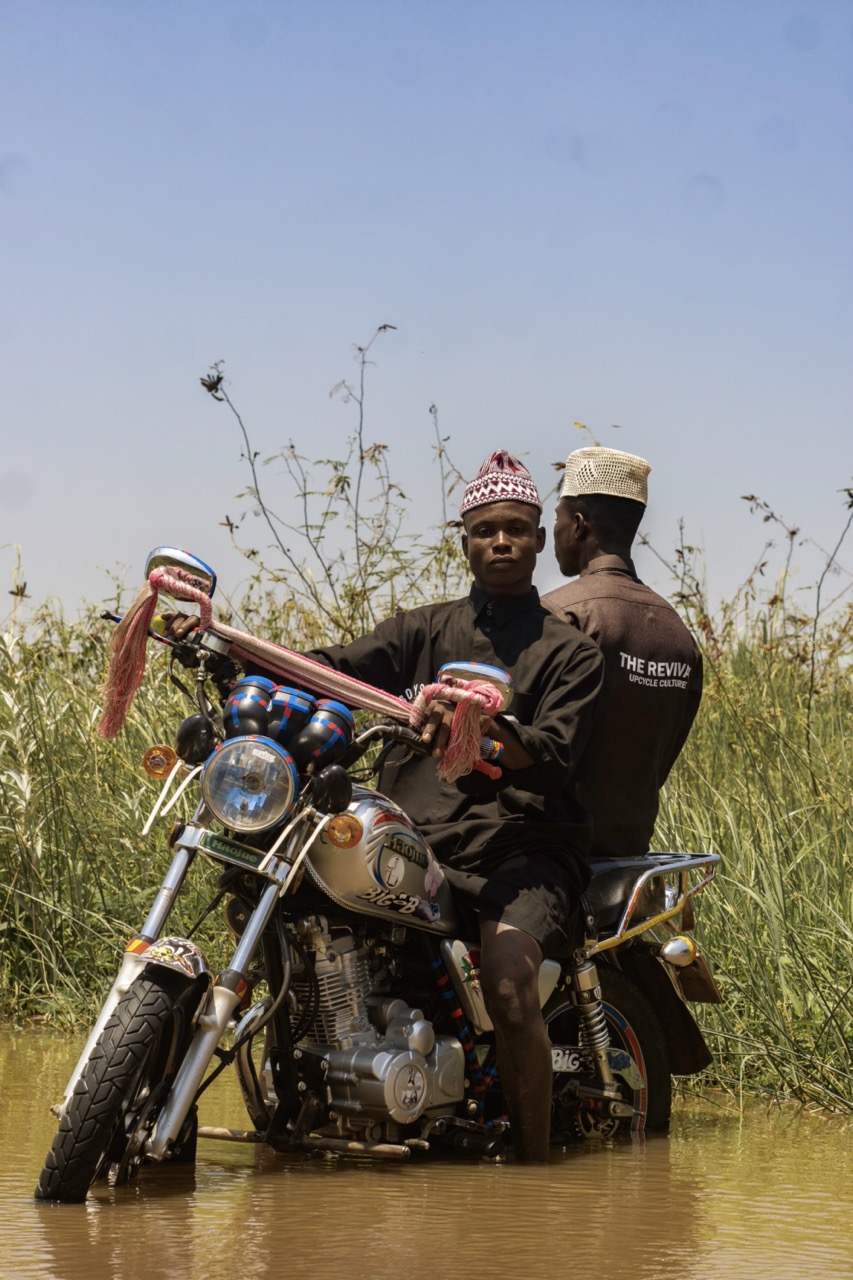
Are there any scraps left behind from one project that you reinterpret when you move on to another one? There are common motifs that I feel progress and evolve from your later projects into your more contemporary ones.
YAYRA AFGOBAH: Absolutely, repurposing is central to our process, and each project often leaves behind materials that carry new potential. For us, these remnants aren’t just scraps—they’re building blocks for future creations, each with its own story. For example, fabric offcuts from one upcycling project might become the patchwork for a new collection or even inspire a series of textile art pieces. This approach lets us explore evolving motifs, like resilience and transformation, which have become part of The Revival’s creative DNA.
As we move from one project to the next, these recycled elements create a natural continuity, bridging past and present work. This way, each piece doesn’t just reflect our commitment to sustainability but also tells a story of progression, reflecting how our practice and impact continue to evolve.
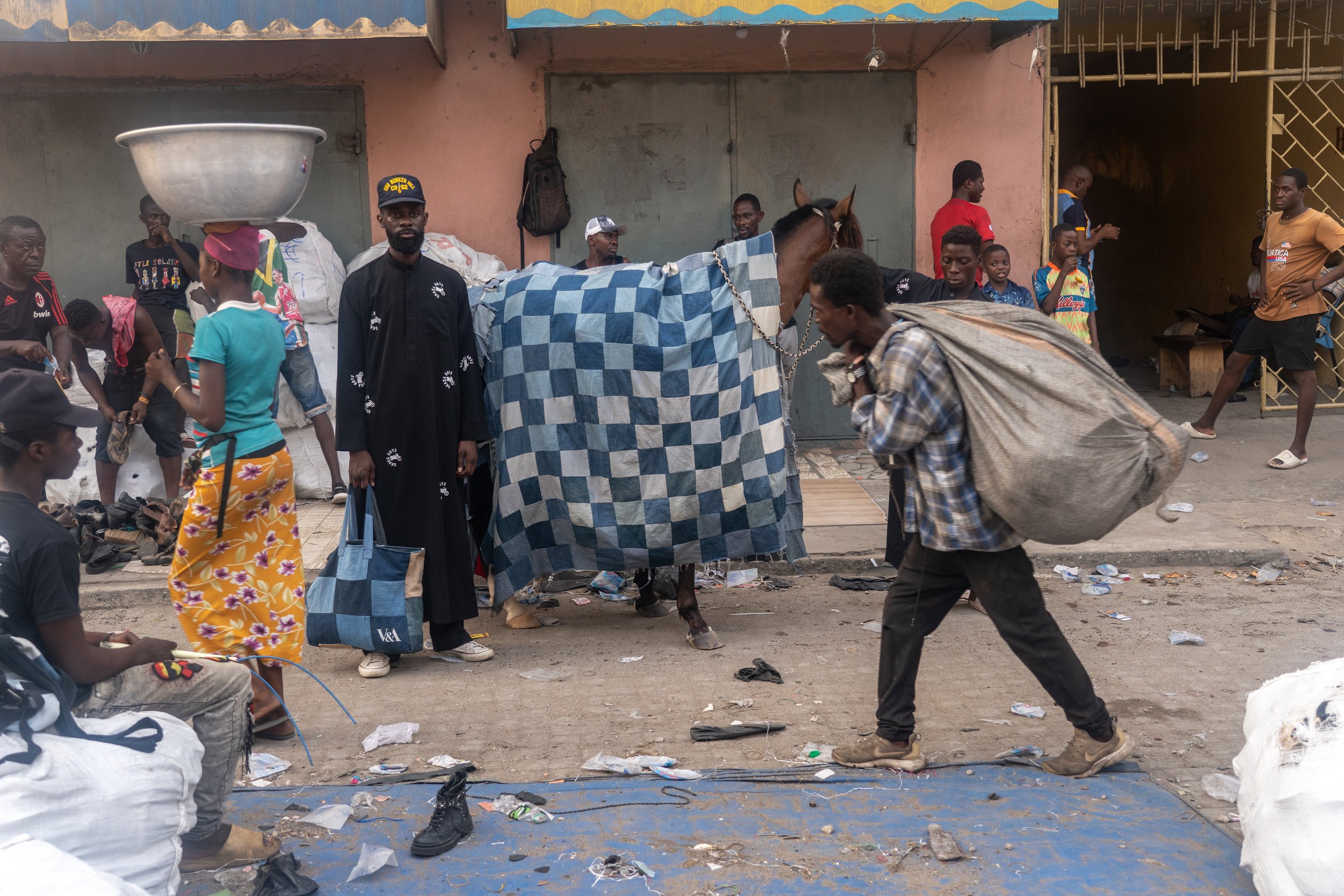
I am particularly drawn to the intention behind the materials you select and the techniques you turn to in reinvigorating them, especially as your studio occasionally plays hose to pop-ups and workrooms as part of your approach to artistically stimulate consumers. Can you speak more on this, especially as you also “feature music, talks and screenings” within these sessions? How does one creative medium complement or contrast with another?
YAYRA AFGOBAH: The materials and techniques we choose are intentionally selected to not only showcase sustainability but also to invite deeper engagement with the story behind each piece. We aim to elevate reclaimed fabrics and discarded items through traditional craftsmanship and inventive processes, showing their potential for transformation. Hosting pop-ups and workrooms allows us to share this hands-on approach directly with consumers, inviting them to see, feel, and even take part in the creative process.
Integrating other mediums, like music, talks, and screenings, creates a multi-sensory experience where each element enhances the message. For instance, music can evoke the rhythm and resilience of the Kantamanto community, while film screenings and talks dive into the global impact of textile waste. These mediums interact in a way that contrasts and complements—where a vibrant piece of upcycled clothing might stand as a symbol of resilience, the accompanying music or film might explore the systemic challenges of fashion waste. Each medium contributes its voice to a larger narrative, making sustainability accessible, dynamic, and emotionally resonant.
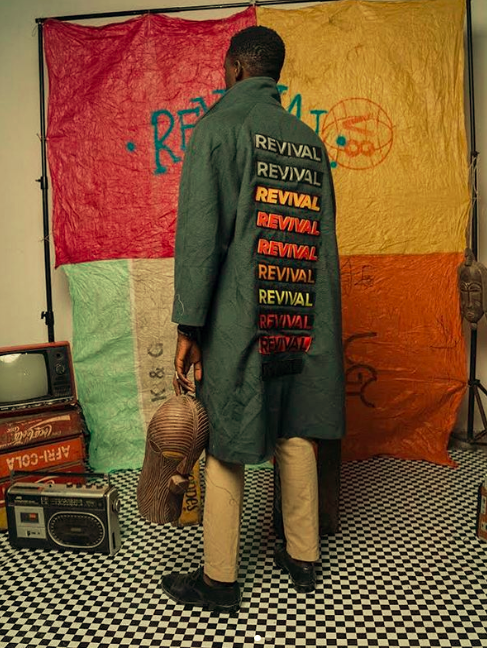
In which ways do you believe these events ultimately are concentrated on a discarding of prejudice when it concerns the perspectives of waste materials, and the alternative espousing of them as opportunities for revival and refreshment, particularly within the creative space?
YAYRA AFGOBAH: These events are very much about challenging preconceptions. By bringing people into a space where they can see waste materials transformed into art and fashion, we’re redefining how these items are valued. We invite participants to question the traditional view of waste as something to be discarded, reframing it instead as raw material for innovation.
When people witness firsthand the artistry that can come from what’s typically seen as “trash,” it shifts the perception entirely—waste becomes not just viable but vibrant, valuable, and worth celebrating. This approach not only dissolves stigmas around upcycled goods but also opens up a wider dialogue on sustainability, where everyone can see themselves as part of a positive cycle of renewal within the creative space.
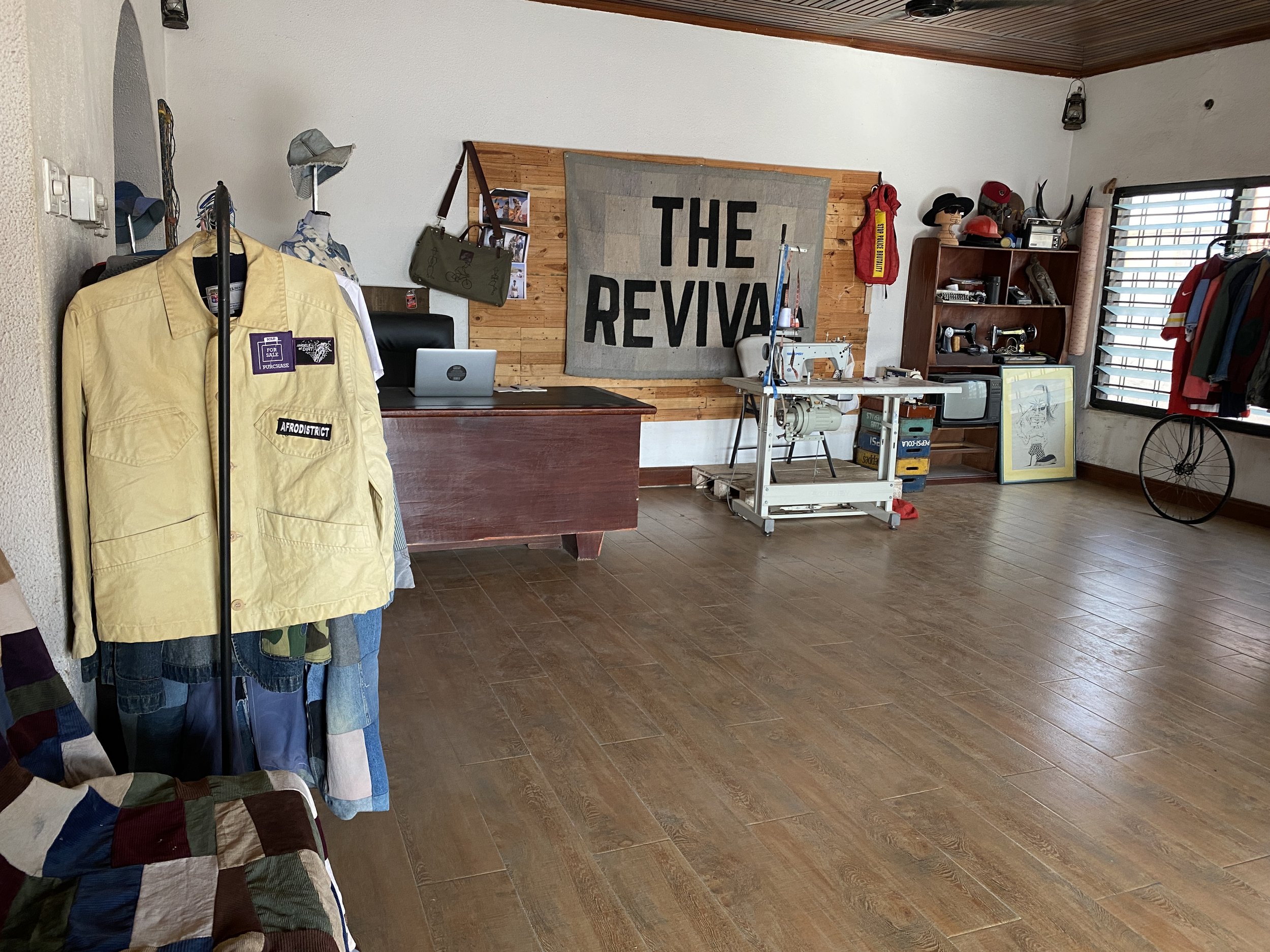
Whilst we’re on this, walk me through this latest project of yours. Where has it come from and where is it going, both within your practice and the broader cultural, political and social encounters you’ve had?
YAYRA AFGOBAH: Our latest project, the Upcycling Incubation Program, is deeply rooted in our mission to empower artisans, particularly the young ladies who transport heavy loads of used clothing on their heads who are locally called “Kayayei” and youth in the Kantamanto community. This initiative originated from recognizing the immense potential of these groups, who often face significant socio-economic challenges, yet possess incredible skills and creativity.
The program provides training in upcycling techniques, allowing participants to transform textile waste into valuable products. By leveraging the rich cultural heritage of our artisans and incorporating contemporary design practices, we aim to not only enhance their craftsmanship but also create a sustainable livelihood for them. This project is a direct response to the pressing issues of waste management and unemployment in our community, fostering a sense of pride and ownership among participants.
Looking ahead, the Upcycling Incubation Program seeks to create a ripple effect within the broader cultural landscape. We envision a future where these artisans can establish their own brands, showcasing their work to local and international markets. This program not only contributes to environmental sustainability by reducing textile waste but also addresses social inequalities by providing economic opportunities for marginalised groups.
Ultimately, this initiative aligns with our broader goal of reshaping the narratives around waste and fashion in Ghana, encouraging a cultural shift towards valuing sustainability and community engagement. Through our Kantamanto studio, we are creating a vibrant space where creativity meets social responsibility, paving the way for lasting change in both our practice and the community at large.
